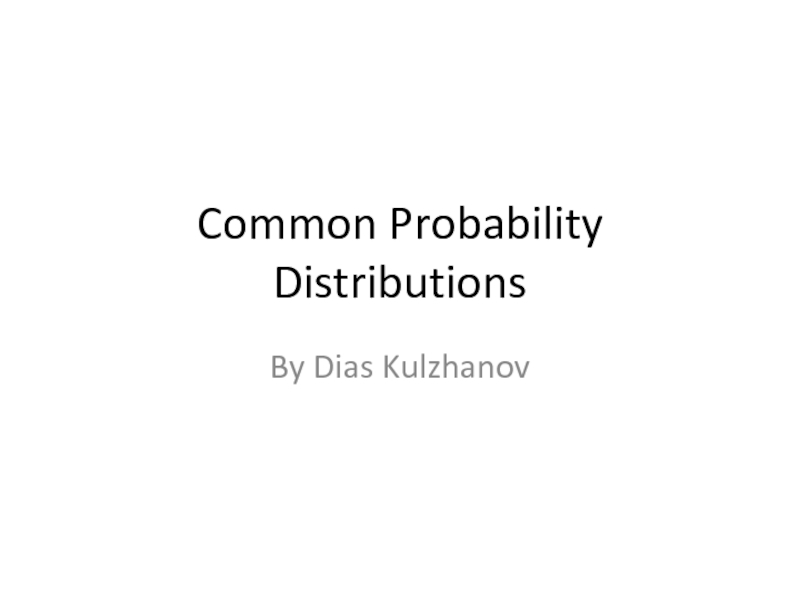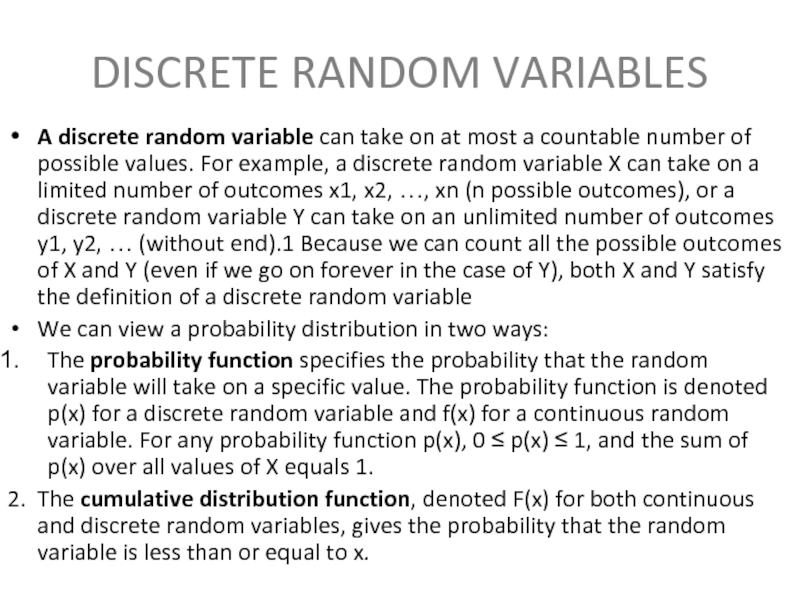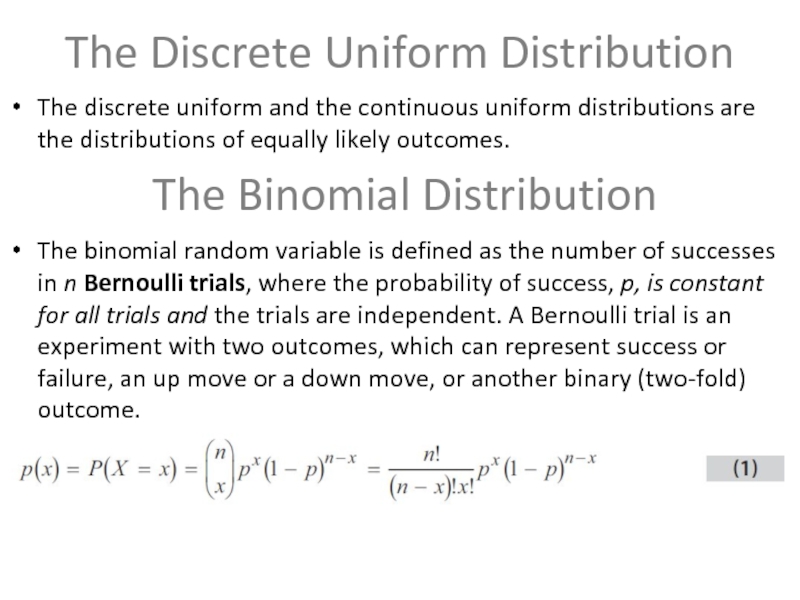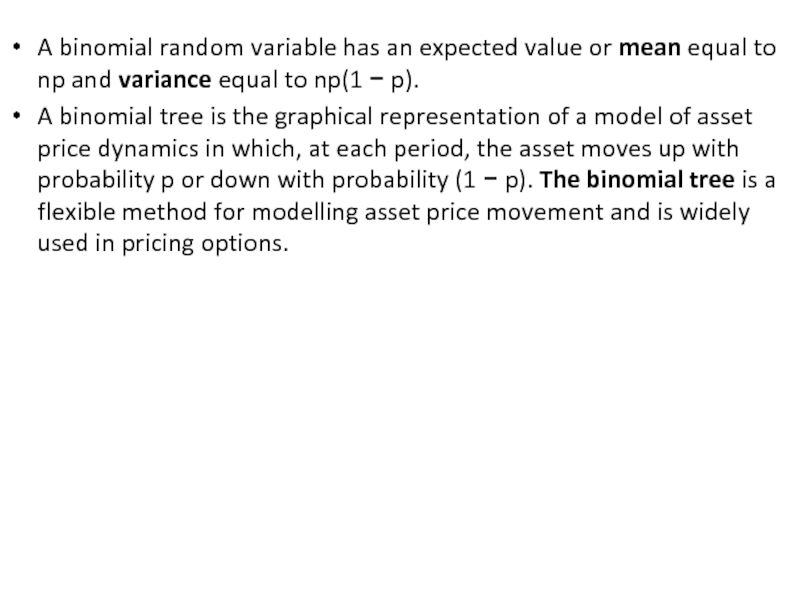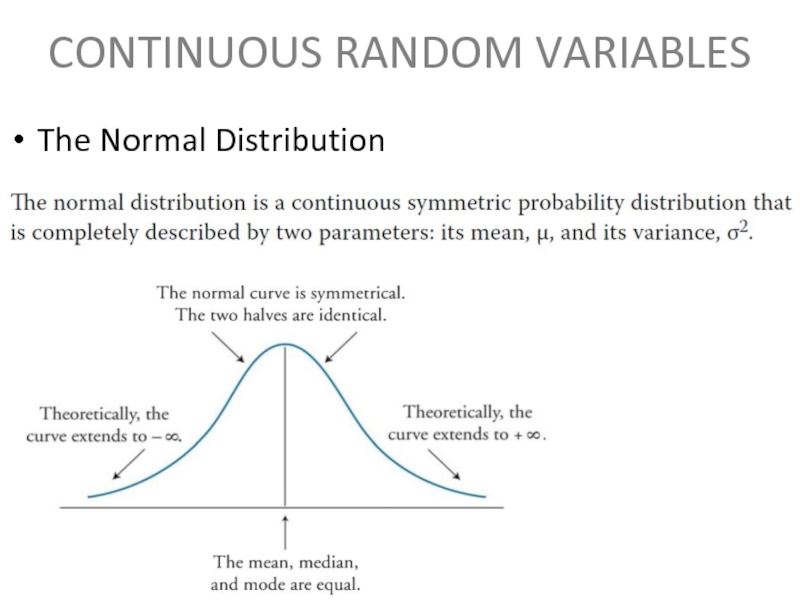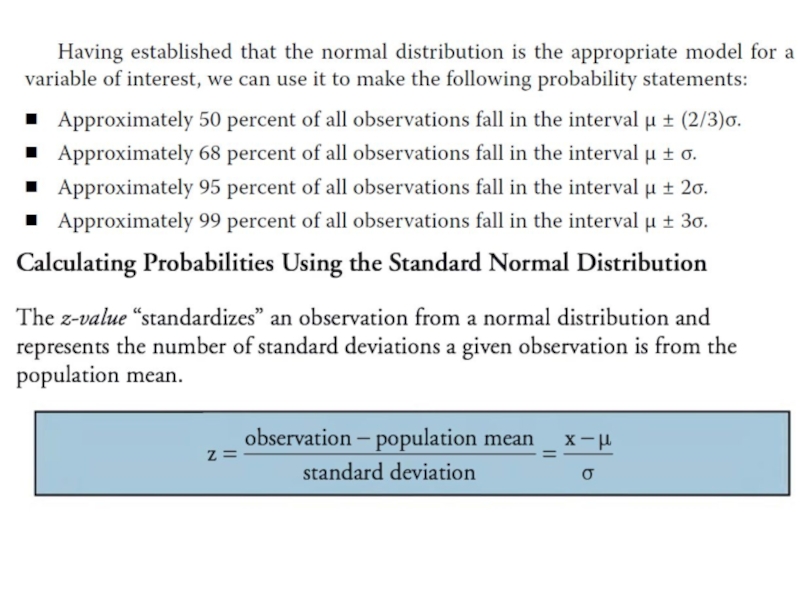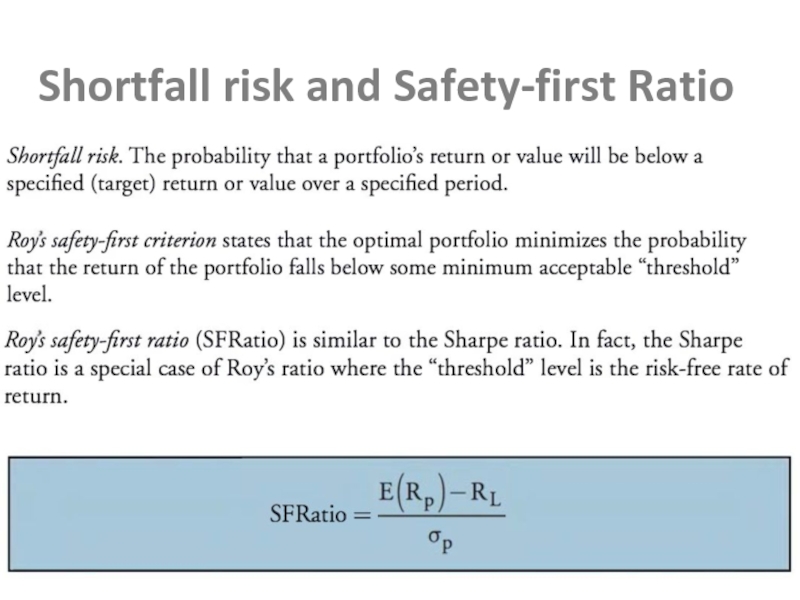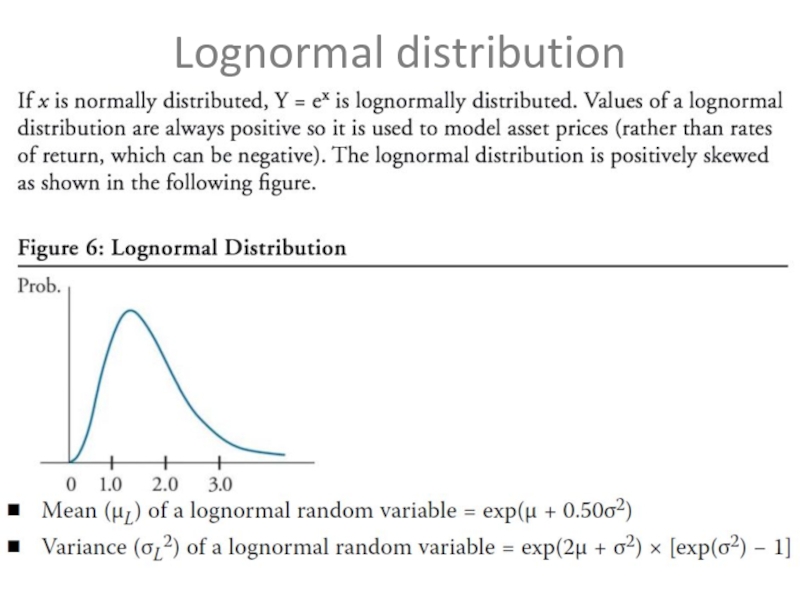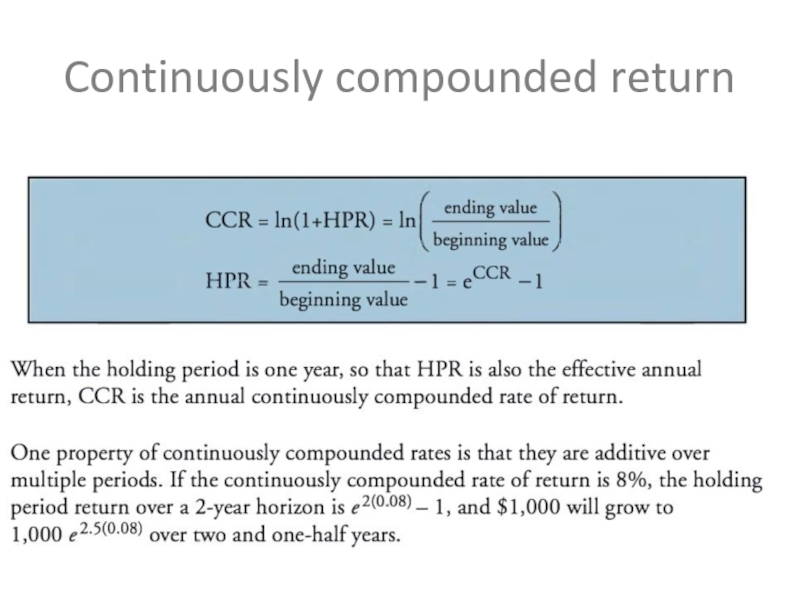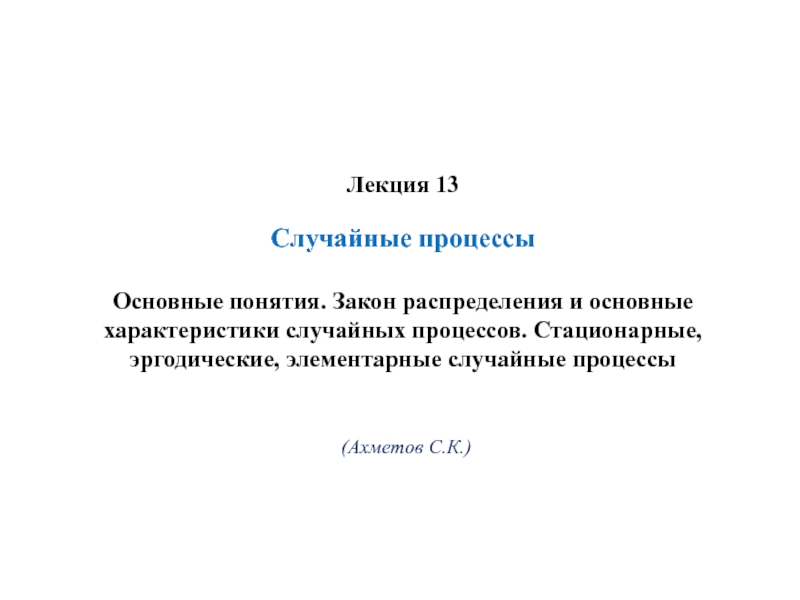- Главная
- Разное
- Дизайн
- Бизнес и предпринимательство
- Аналитика
- Образование
- Развлечения
- Красота и здоровье
- Финансы
- Государство
- Путешествия
- Спорт
- Недвижимость
- Армия
- Графика
- Культурология
- Еда и кулинария
- Лингвистика
- Английский язык
- Астрономия
- Алгебра
- Биология
- География
- Детские презентации
- Информатика
- История
- Литература
- Маркетинг
- Математика
- Медицина
- Менеджмент
- Музыка
- МХК
- Немецкий язык
- ОБЖ
- Обществознание
- Окружающий мир
- Педагогика
- Русский язык
- Технология
- Физика
- Философия
- Химия
- Шаблоны, картинки для презентаций
- Экология
- Экономика
- Юриспруденция
Common Probability Distributions презентация
Содержание
- 1. Common Probability Distributions
- 2. DISCRETE RANDOM VARIABLES A discrete random variable
- 3. The Discrete Uniform Distribution The discrete uniform
- 4. A binomial random variable has an expected
- 5. CONTINUOUS RANDOM VARIABLES The Normal Distribution
- 7. Shortfall risk and Safety-first Ratio
- 8. Lognormal distribution
- 9. Continuously compounded return
Слайд 2DISCRETE RANDOM VARIABLES
A discrete random variable can take on at most
a countable number of possible values. For example, a discrete random variable X can take on a limited number of outcomes x1, x2, …, xn (n possible outcomes), or a discrete random variable Y can take on an unlimited number of outcomes y1, y2, … (without end).1 Because we can count all the possible outcomes of X and Y (even if we go on forever in the case of Y), both X and Y satisfy the definition of a discrete random variable
We can view a probability distribution in two ways:
The probability function specifies the probability that the random variable will take on a specific value. The probability function is denoted p(x) for a discrete random variable and f(x) for a continuous random variable. For any probability function p(x), 0 ≤ p(x) ≤ 1, and the sum of p(x) over all values of X equals 1.
2. The cumulative distribution function, denoted F(x) for both continuous and discrete random variables, gives the probability that the random variable is less than or equal to x.
We can view a probability distribution in two ways:
The probability function specifies the probability that the random variable will take on a specific value. The probability function is denoted p(x) for a discrete random variable and f(x) for a continuous random variable. For any probability function p(x), 0 ≤ p(x) ≤ 1, and the sum of p(x) over all values of X equals 1.
2. The cumulative distribution function, denoted F(x) for both continuous and discrete random variables, gives the probability that the random variable is less than or equal to x.
Слайд 3The Discrete Uniform Distribution
The discrete uniform and the continuous uniform distributions
are the distributions of equally likely outcomes.
The binomial random variable is defined as the number of successes in n Bernoulli trials, where the probability of success, p, is constant for all trials and the trials are independent. A Bernoulli trial is an experiment with two outcomes, which can represent success or failure, an up move or a down move, or another binary (two-fold) outcome.
The binomial random variable is defined as the number of successes in n Bernoulli trials, where the probability of success, p, is constant for all trials and the trials are independent. A Bernoulli trial is an experiment with two outcomes, which can represent success or failure, an up move or a down move, or another binary (two-fold) outcome.
The Binomial Distribution
Слайд 4A binomial random variable has an expected value or mean equal
to np and variance equal to np(1 − p).
A binomial tree is the graphical representation of a model of asset price dynamics in which, at each period, the asset moves up with probability p or down with probability (1 − p). The binomial tree is a flexible method for modelling asset price movement and is widely used in pricing options.
A binomial tree is the graphical representation of a model of asset price dynamics in which, at each period, the asset moves up with probability p or down with probability (1 − p). The binomial tree is a flexible method for modelling asset price movement and is widely used in pricing options.
